
The Thomas A. Parker House was built as a private residence and is located at 975 East Jefferson Avenue in Detroit, Michigan. The house was listed on the National Register of Historic Places in 1982. It is currently the law offices of Liddle & Dubin, P.C.
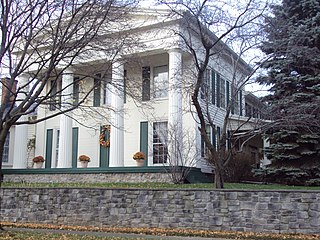
The Rudolph Nims House is a private residence located at 206 West Noble Street in the city of Monroe in Monroe County, Michigan. It was listed as a Michigan Historic Site on October 29, 1971 and added to the National Register of Historic Places on October 18, 1972.

The Dr. Leonard Hall House was a private resident located at 334 West Main Street (M-34) in Hudson in westernmost Lenawee County, Michigan. It was designated as a Michigan Historic Site on April 4, 1978 and later added to the National Register of Historic Places on October 2, 1978.
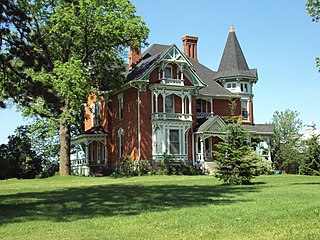
The George B. Horton and Amanda Bradish Farmstead is a privately owned farmhouse that sits on 40 acres of land at 4650 West Horton Road in rural Fairfield Township in Lenawee County, Michigan. It was added to the National Register of Historic Places on February 1, 2007. There are several other buildings on the property, but the main farmhouse was built in 1888 in Queen Anne Style.

The East River Road Historic District is a historic district located along East River Road near the Grosse Ile Parkway in Grosse Ile, Michigan. The district includes eleven structures, including seven houses, two outbuildings, St. James Episcopal Church, and the Michigan Central Railroad depot. The district stretches from St. James Episcopal Church on the south to Littlecote on the north. The district was designated a Michigan State Historic Site in 1972 and listed on the National Register of Historic Places in 1973. The historically significant 1870s customs house was moved into the district in 1979.
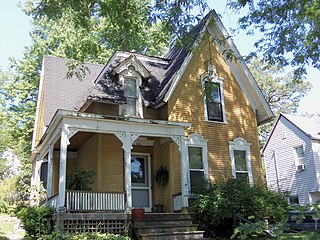
The Jacob Quickel House is a historic building located on the east side of Davenport, Iowa, United States. It has been listed on the National Register of Historic Places since 1984.

The General Squier Memorial Park is a park located at 4725 South Mill Road in Dryden Township in southeastern Lapeer County, Michigan. It was designated as a Michigan Historic Site on June 6, 1977 and later added to the National Register of Historic Places on June 5, 1986 as the Dryden Community Country Club–General Squier Historic Park Complex. The site is also known locally as the General George Squier Club or General Squier County Park.

The West Saint Clair Street Historic District is a residential historic district located along 124–328 West Saint Clair Street in the village of Almont in Almont Township in southeast Lapeer County, Michigan. It was designated as a Michigan State Historic Site and also added to the National Register of Historic Places on May 8, 1986.

The John W. Day House, also known as the Day-Dittman House, is a private residential structure located at 4985 Dryden Road in Dryden Township in southern Lapeer County, Michigan, United States. It was designated as a Michigan State Historic Site on September 26, 1987 and soon after added to the National Register of Historic Places on December 17, 1987.

The Chelsea Commercial Historic District is a historic district located along both sides of Main Street from Orchard to North Street in Chelsea, Michigan; the district also includes the adjacent 100 blocks of Jackson, East Middle, and West Middle Streets, as well as structures on Park, East, and Orchard Streets. It was listed on the National Register of Historic Places in 2011.
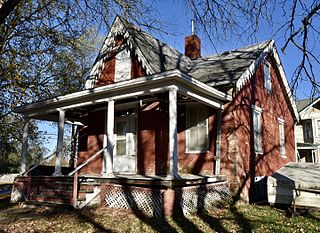
Stratton House is a historic residence located in Centerville, Iowa, United States. The 1½-story brick house exhibits aspects of the Gothic Revival style, especially in its plan, steeply pitched gables and bargeboard trim. It was built by Jonathan F. Stratton. Stratton was a Pennsylvania native who moved to Michigan in 1820 where he was a surveyor, community leader, commissioner of highways and Justice of the Peace. In 1841 he was the first person to stake a claim in Appanoose County, near present-day Cincinnati, Iowa. After moving to Udell Township two years later his home was the location for the first religious service and the first election in the county. His wife taught several local children in their home making it the first school in the northern part of the county. He opened the first grist mill in the county in 1845. The following year, Stratton surveyed, platted and settled Centerville, which had been named the new county seat. He built this house in 1858, and died here in 1884. It was listed on the National Register of Historic Places in 1975.

The Cherry DeLefebvre House is a private house located at 115 West Chart Street in Plainwell, Michigan. It was listed on the National Register of Historic Places in 1991.

The Wilbur F. Davidson House is a private house located at 1707 Military Street in Port Huron, Michigan. It was listed on the National Register of Historic Places in 1972.

The Charles Palmer House is a single-family home located at 240 North Main Street in Imlay City, Michigan. It was listed on the National Register of Historic Places in 1987.

The Jacob Hoffstetter House is a former single-family home located at 322 East Washington Street in Ann Arbor, Michigan. It was listed on the National Register of Historic Places in 1982.
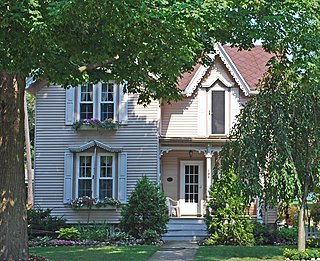
The Louis Sturm House is a single family home located at 100 Russell in Saline, Michigan. It was listed on the National Register of Historic Places in 1985.

The Samuel D. Van Duzer House was built as a single family home, and is located at 205 South Ann Arbor Street in Saline, Michigan. It was listed on the National Register of Historic Places in 1985.
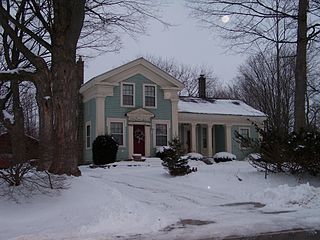
The Jacob Fishbeck Farmstead is a farm located at 5151 Crooked Lake Road in Genoa Township, Michigan. It was listed on the National Register of Historic Places in 2003.

The Westside Neighborhood Historic District is a residential historic district, located along West Maple, and West Ash Street between South McRoberts Street and the railroad grade east of Sycamore Creek in Mason, Michigan. It also includes The district was listed on the National Register of Historic Places in 1985.

The Roethke Houses are two side-by-side single family homes located at 1759 and 1805 Gratiot Avenue in Saginaw, Michigan. THey were listed on the National Register of Historic Places in 2001.

























